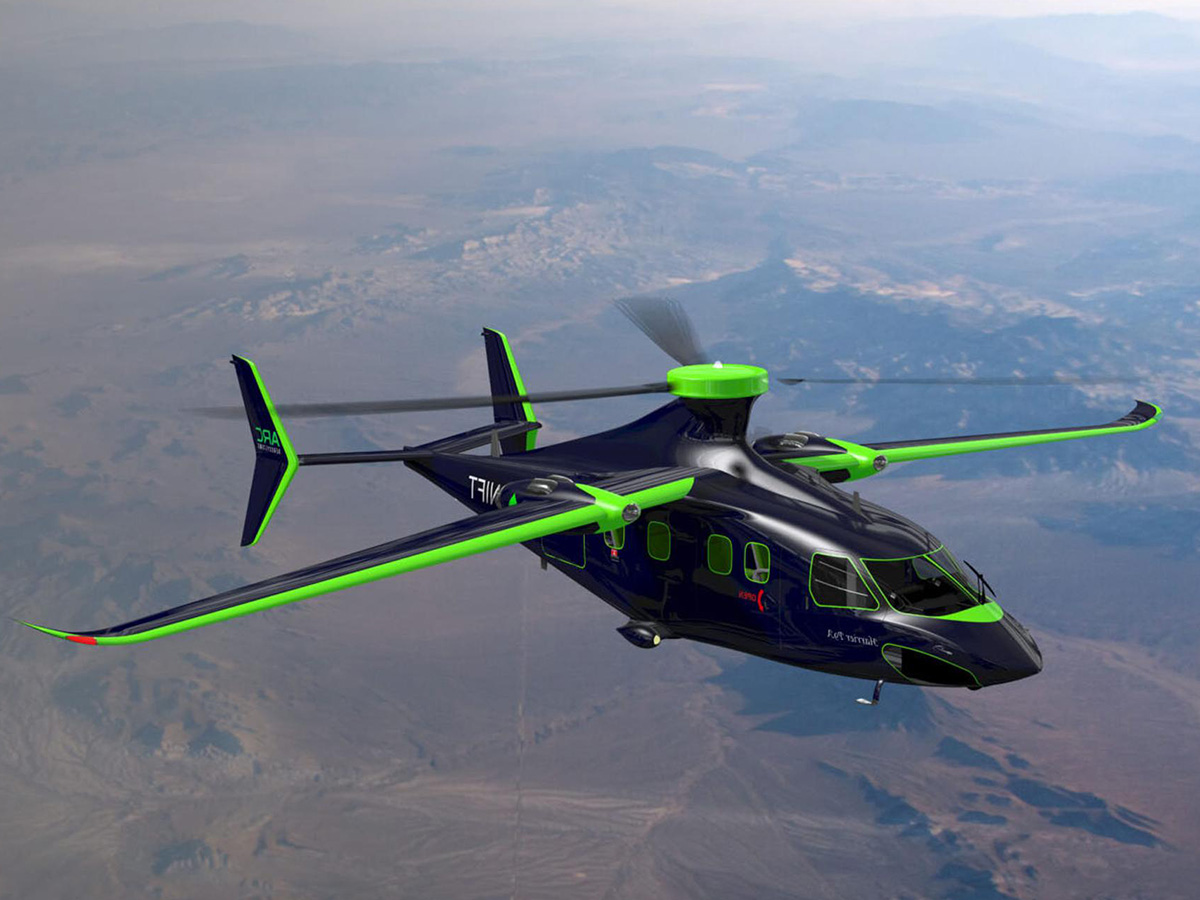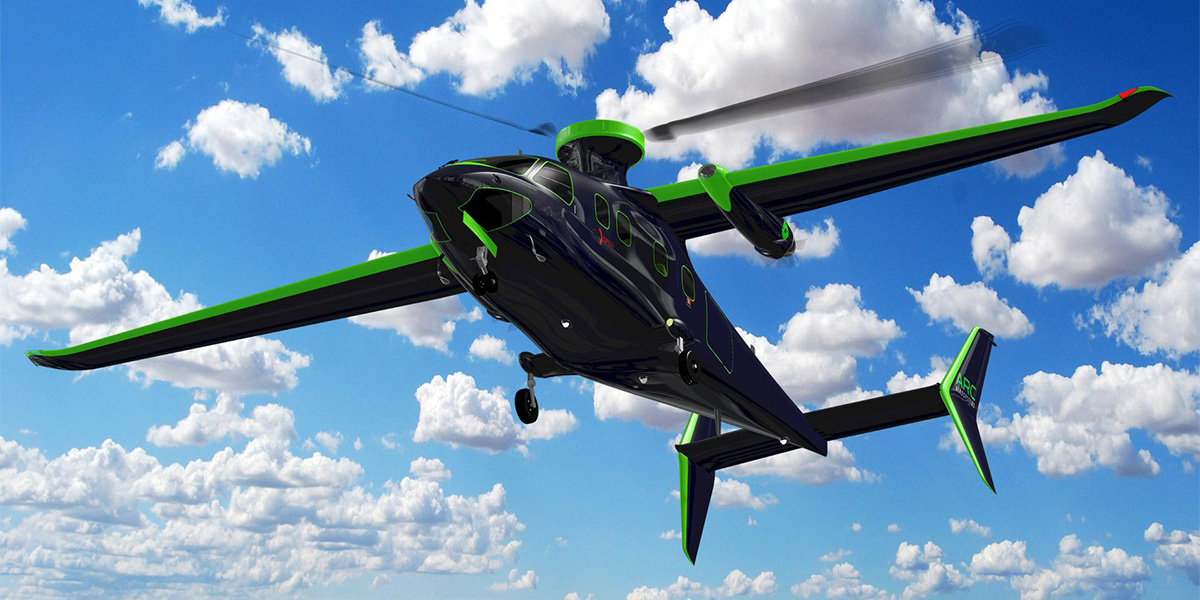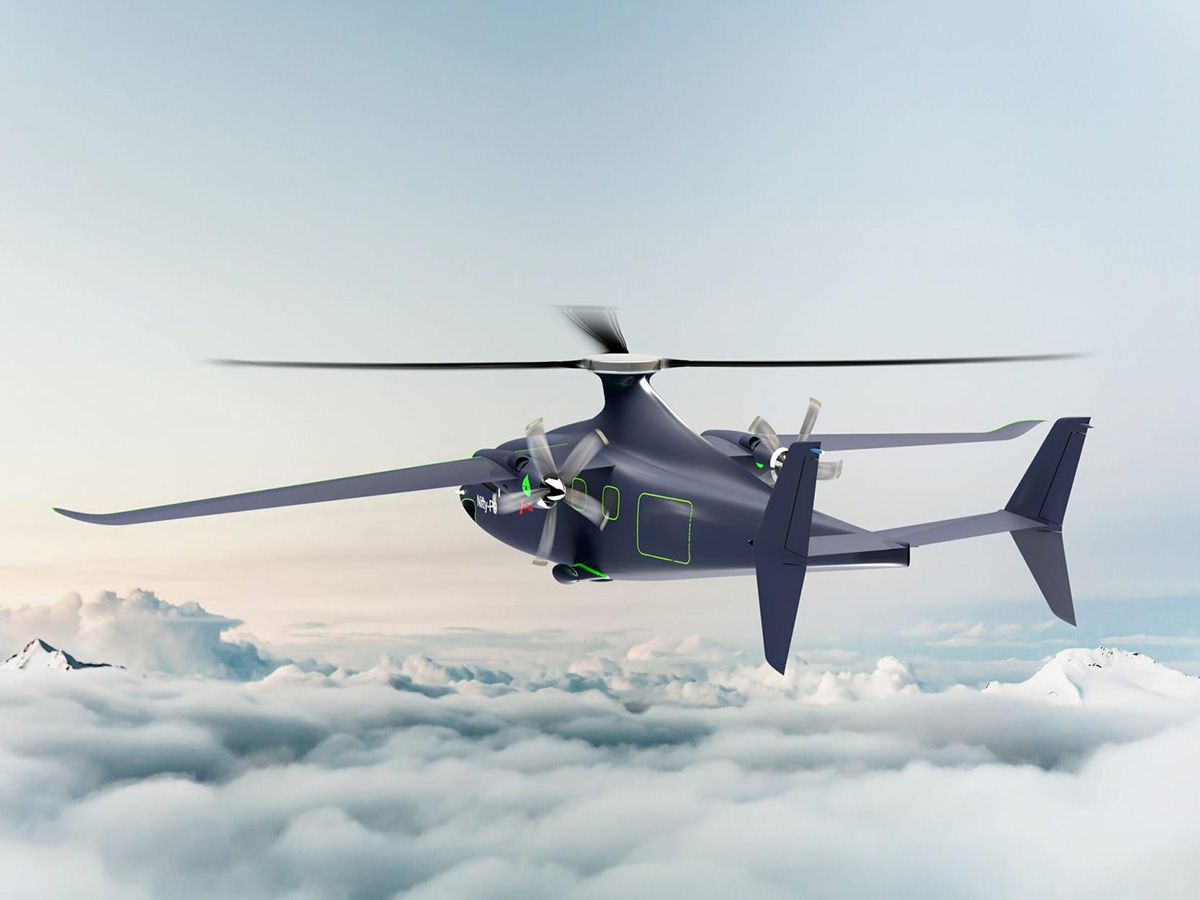Arc announces the development of a hybrid, 800-mile range airplane.
Arc Aero Systems, a British company that was originally known as Samad Aerospace, has presented its ideas for a “cost-effective, low-carbon answer to intercity travel.” The hybrid Linx P9 claims to outperform helicopters of a similar size in terms of range, speed, and operating costs.
For longer-range missions, ARC, previously Samad Aerospace, has stated it is developing a nine-seat hybrid VTOL gyroplane. The ARC Aero Systems
The airframe, which is made entirely of composite materials and weighs just 4,255 lb (1,930 kg) when empty, resembles a cross between a plane, a helicopter, and a gyroplane. The nine-seat cabin is unmistakably helicopter-like, but it has a large tail wing and fins in addition to a thin, 41.3-ft (12.6-m) main wing with two 2-m (6.6-ft) pusher props hanging off the back.
The top rotor, which measures 13 m (42.6 ft) in diameter and can be controlled in pitch, is not coupled with a tail rotor and doesn’t seem to be collectively controllable. It is comparable to a gyroplane in these aspects, although gyroplanes by definition have unpowered top rotors. Gyroplanes normally require some air speed to take flight, but the Linx P9 employs an electric engine to spin the top rotor up quickly enough for vertical takeoff and landing.
When the aircraft is in the air, the pusher props start to work. After airspeed is reached, the wings begin to perform 90% of the lifting, and the top rotor may be immediately slowed down. This lessens drag and essentially gets rid of the asymmetrical lift that helicopters produce as a result of retreating blade stall. It can thus reach a top cruise speed of 230 mph (370 km/h), which has only ever been surpassed by the Eurocopter AS365 Dauphin and a few next-generation exotics like the Sikorsky X2 with coaxial twin-top rotors.
In terms of range, hybrid and pure fossil-powered versions will outperform fully electric aircraft. The ARC Aero Systems
Although the pusher props will be powered by 370 kW (496 horsepower) turbo engines, the top rotor may be electric. These, according to Arc, will eventually be replaced by a hydrogen fuel cell powertrain or will run on sustainable aviation fuel. The Linx P9’s size and speed make it more relevant to regional routes than cross-town hops, and Arc projects it can deliver a 590-mile (950 km) range in a standard configuration using about 1,320 lb (600 kg) of fuel, or an 808-mile (1,300 km) range with an extended-range tank fitted. Running hydrocarbon fuels might be a little on the nose for a future-focused aircraft.
A 9-seat Sikorsky S-92, for contrast, has a maximum range of 630 miles (1,014 km) and flies at a high cruise speed of 174 mph (280 km/h), but it must carry 5,130 lb (2,333 kg) of fuel to get there. Despite the Sikorsky weighing more than four times as much as the Arc vehicle, this amounts to 3.9 times as much fuel and a minimal increase in range.
Arc claims that the cost to operate this machine is roughly US$505 per flying hour, or about 40% less than the cost of comparable helicopters.
For longer-range missions, ARC, previously Samad Aerospace, has stated it is developing a nine-seat hybrid VTOL gyroplane. The ARC Aero Systems
The Rosa Aerodyne, a Jaunt Air Mobility concept, and Arc’s design are both updates of the original CarterCopter idea. The slowed-rotor concept has two major advantages over conventional EVTOL air taxi concepts, which Arc and Jaunt both point out quickly. First off, these things have enormous top rotors that, in the event of a complete power outage, can function as parachutes, giving them a chance to autorotate to a safe landing. That is a really substantial last-ditch safety precaution that cannot be matched by EVTOLs.
Second, even if they are uncommon, they are at least generally understood by aviation authorities, in contrast to eVTOL certification, which is a brand-new process that regulators are still trying to define. They are certifiable under current standards. So, there may be a simpler route to commercial type certification here, which lowers risk.
Yet risk is undoubtedly not eliminated. Jay Carter spent 25 years perfecting and marketing his slowed-rotor technology before selling Jaunt Air Mobility all the intellectual property (IP) he had amassed around the idea in 2019. So, in addition to the difficult process of creating, prototyping, certifying, and producing the Linx P9, Arc may face patent difficulties in the future.
The CarterCopter-like Linx P9 is a slowed-rotor aircraft that offers zero-speed vertical takeoff and landing. The ARC Aero Systems
Arc doesn’t provide any sort of timeline for these processes, which is probably for the best. Like with every other aerospace startup, the business is still seeking finance. At the same time, it is moving on with the development of a nine-seat luxury hybrid eVTOL aircraft based on a similar design and an unmanned eVTOL freight drone that is now flying in prototype form.
It has so taken a sizable bite out of itself, and the road ahead is difficult. We wish Arc and Jaunt luck as they seek to make their aircraft a reality since we’re intrigued to see what these types of slowed-rotor machines might be able to bring to the market.
Citation: Arc Aero Systems
Hits: 330








